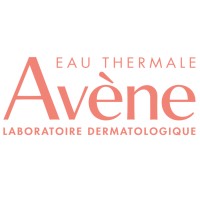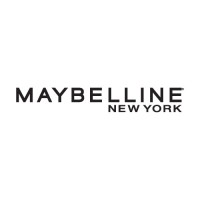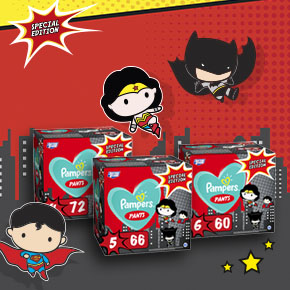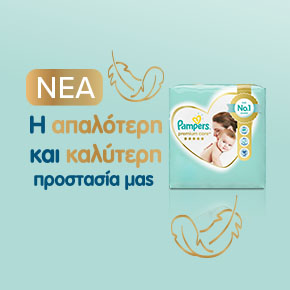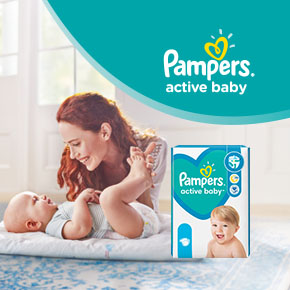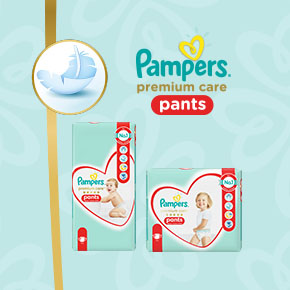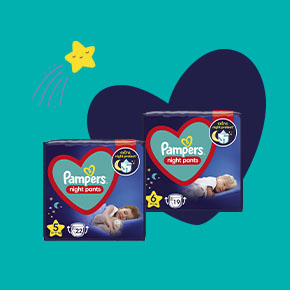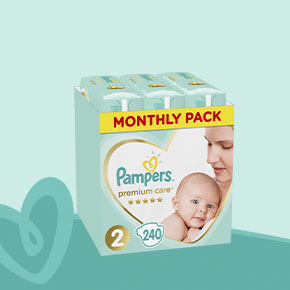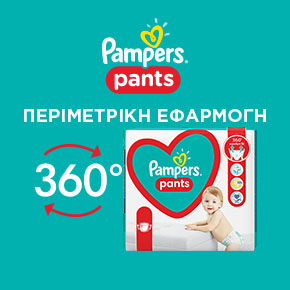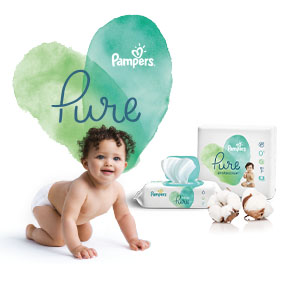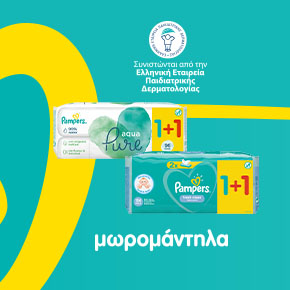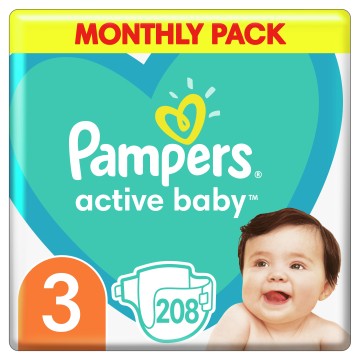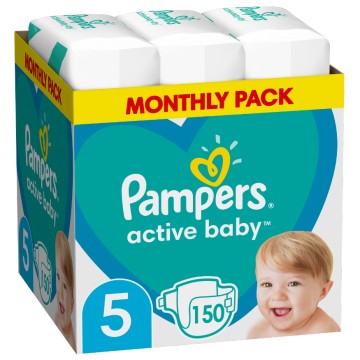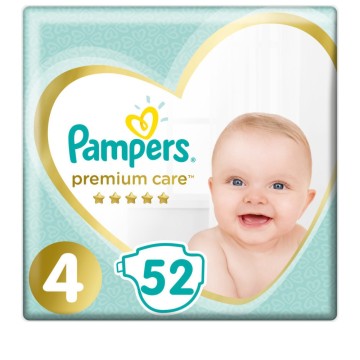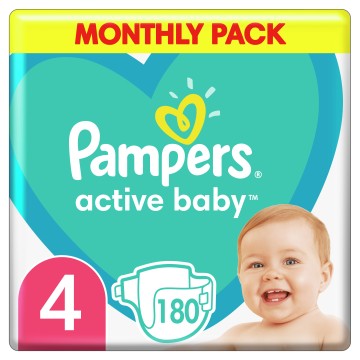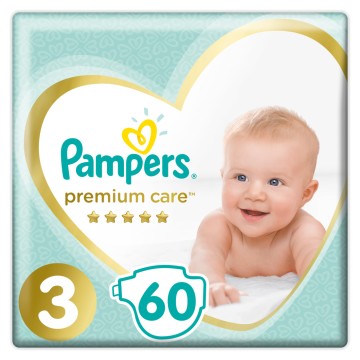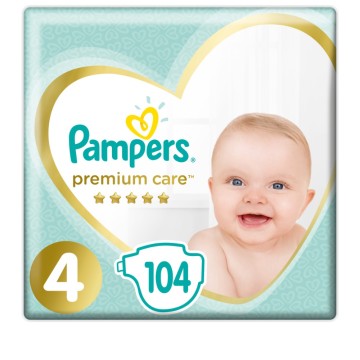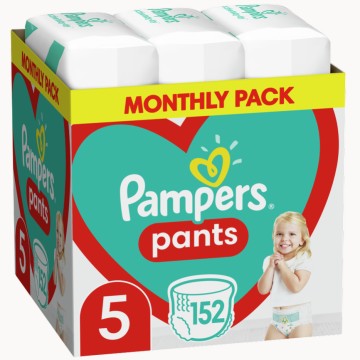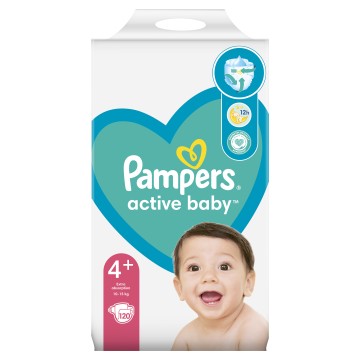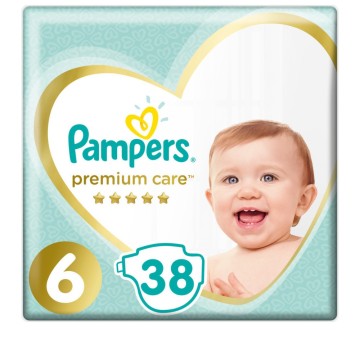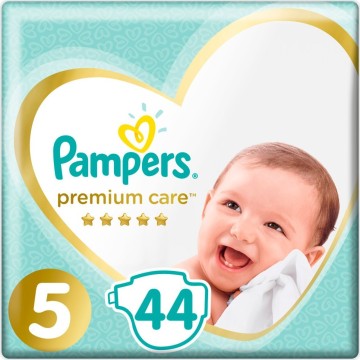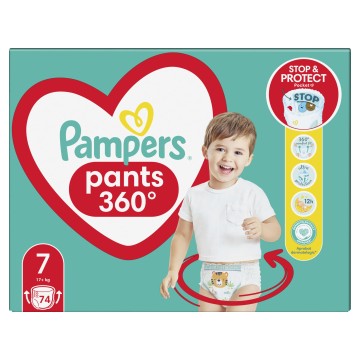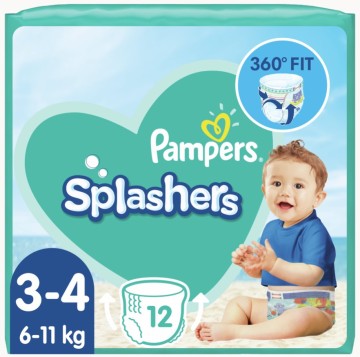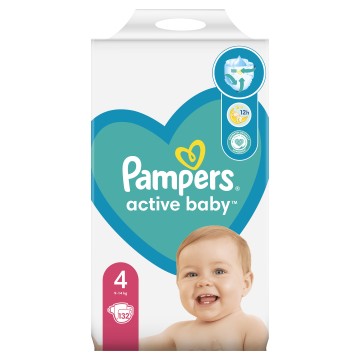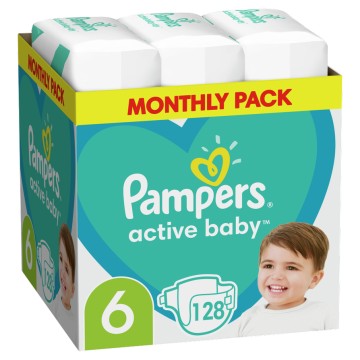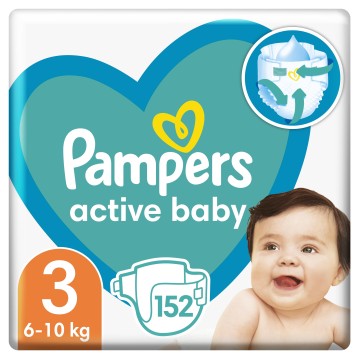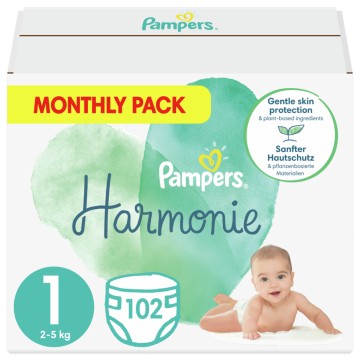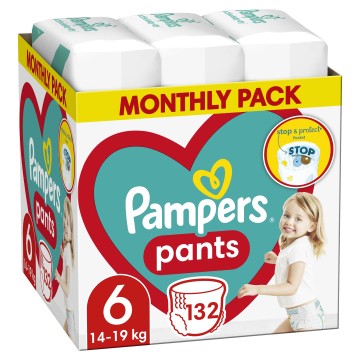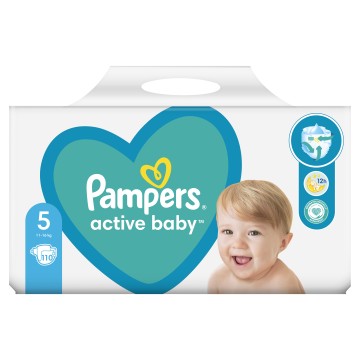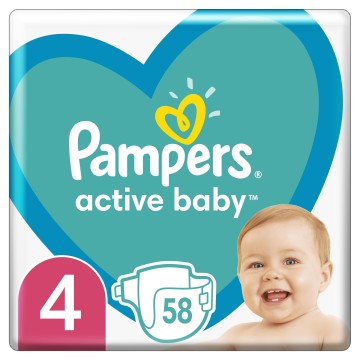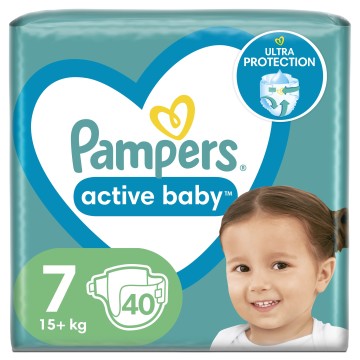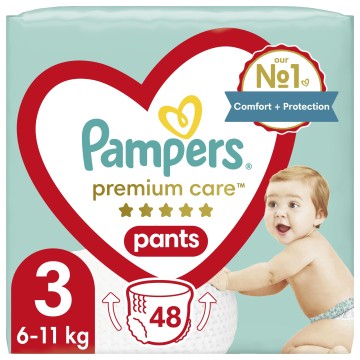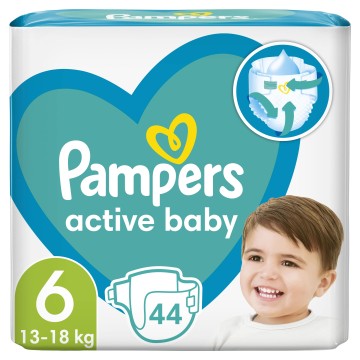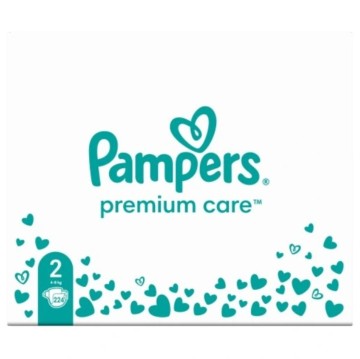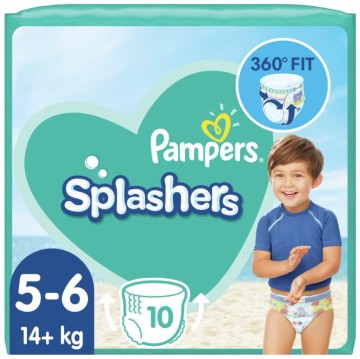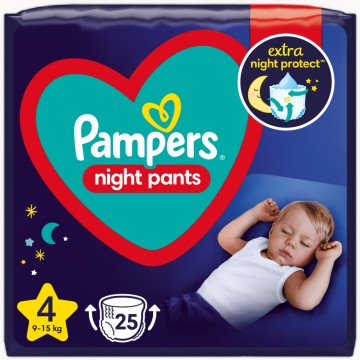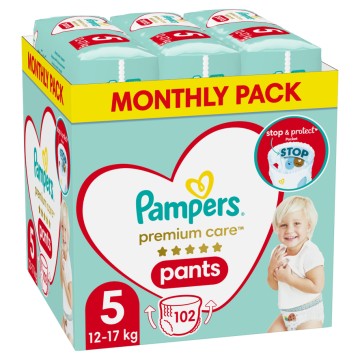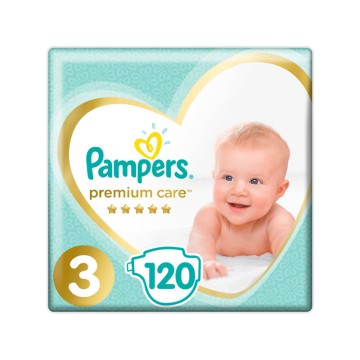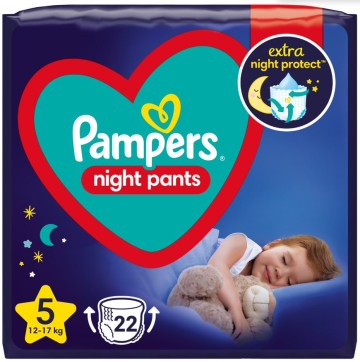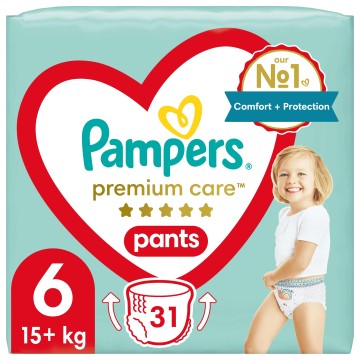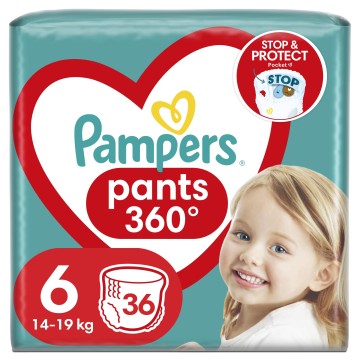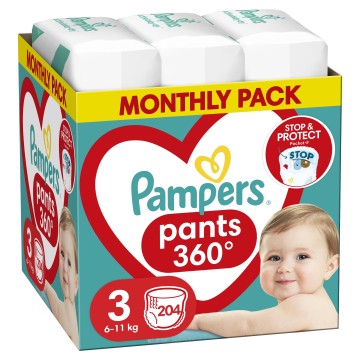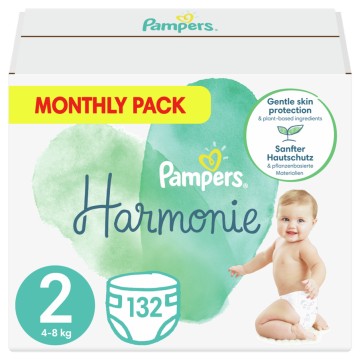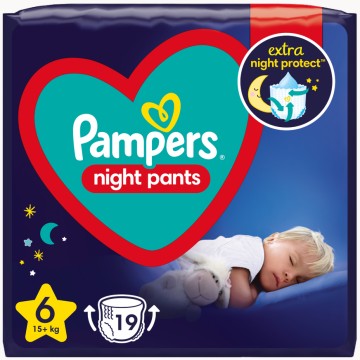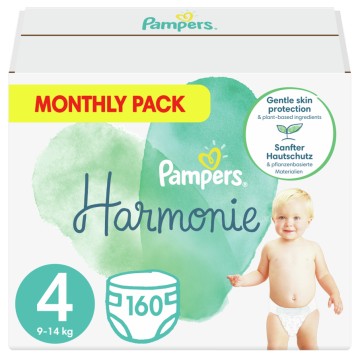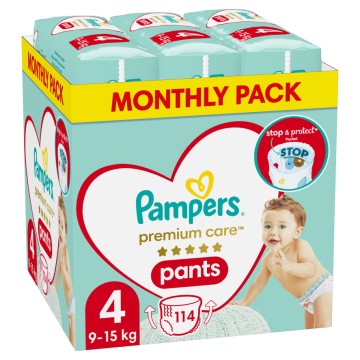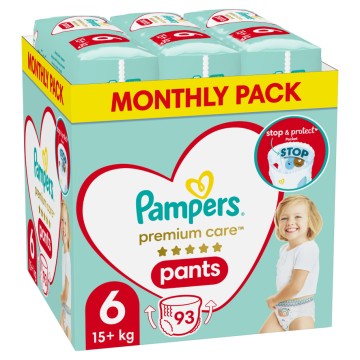Free shipping on orders over 39.00€
Pampers presentation
For more than 40 years, the Pampers has helped improve the lives of infants, toddlers, and the parents who care for them through a complete line of diapers, training underwear, designed for every stage of baby's development. As many of the researchers at Pampers are parents themselves, who put a lot of thought into developing products that benefit both mom and baby, they are determined to make a difference in the lives of all of our babies.
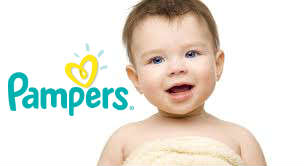 Thanks to four decades of research, hard work, dedication to families around the world, at Pampers you will find the latest in diaper design technology. The brand Pampers that made its debut, as its product features as thanks to the high stretch created the convenience and value for the mom and even more comfort for the baby.
Thanks to four decades of research, hard work, dedication to families around the world, at Pampers you will find the latest in diaper design technology. The brand Pampers that made its debut, as its product features as thanks to the high stretch created the convenience and value for the mom and even more comfort for the baby.
As a mom, you know the most important thing about a diaper is that you helps keep your baby dry and comfortable. You may wonder how diapers and what materials are used to make this everyday product so reliable? Disposable diapers have come a long way since 1961, when Victor Mills, a P&G engineer and researcher, was inspired by his baby grandson to design a better disposable diaper.
Today's Pampers diapers and soft underwear, enable your baby to breathe and move better as he plays and sleeps every day. Like most modern disposable nappies, Pampers have a layered structure, which allows liquids to be transported and distributed away from baby into an absorbent core, where liquid is locked away from baby to help keep it comfortable and dry.
Why Pampers?
A baby's first urine passes through the ducts through a protective inner lining, also called a top sheet. On the top sheet is a thin layer of mild lotion to help maintain baby's skin health by protecting it from moisture.
The urine then passes through the absorbent layer, which is made of fabric-like polyester fibers that are so soft and effective at quickly absorbing liquid, and then the urine moves away from the baby's skin.
The distribution layer captures the flow of urine and transports it to the absorbent core, which is the storage layer of the diaper.
The outer cover of the nappy, also known as the backsheet, is made from a breathable integral film with soft cloth-like fibers to help prevent moisture from transferring to the baby's bedding or clothing.
Absorbent gelling material is an important ingredient for all diapers Pampers. It is used in the core of Pampers to absorb moisture and keep your baby dry.
The Super absorbent coagulant material it has been widely used since the 1980s in a variety of consumer products, including diapers, feminine hygiene products, and food packaging.
When in diaper Pampers added Super absorbent gelling material is dry and granular, like sugar, but forms a gel as it absorbs liquid. In fact, it can hold up to 30 times its weight in moisture as the diaper's locked walls keep it away to prevent wetness.
At Pampers, care extends from holding the baby to caring for the planet it will inherit. The use of disposable diapers has become an integral part of the daily care of our little ones, but it is natural to wonder about their impact on the environment.
Here at Pampers, we are taking action to reduce the environmental impact of our nappies and we present you with four simple tips for the correct disposal of used nappies.
Life Cycle of a Diaper
We aim to reduce our ecological footprint by looking at the entire process from material sourcing to production, packaging and recycling.
Initiatives to Reduce the Environmental Footprint at Pampers:
- Raw materials: We use cellulose and paper boxes from managed forest areas, while Pampers Pure diapers and baby wipes contain fiber from responsibly sourced sources.
- Production: Our factories send no waste to landfill, and in Europe we use 100% renewable electricity.
- Packing: We are working to make our packaging from at least 50% recycled or recyclable materials by 2025.
Tips for Disposing of Used Diapers:
- Cleanliness: Always wash hands before and after changing diapers.
- Packing: Wrap the used diaper tightly using the bands to reduce exposure to dirt.
- Rejection: Dispose of the diaper in a closed trash can to avoid odors. Check packaging instructions for specific disposal instructions.
- Security: Keep diapers and packaging away from children for safety reasons.
Through continuous effort and technological innovation, we aim to gradually reduce our environmental footprint, while offering unsurpassed protection and care for your baby's skin.




